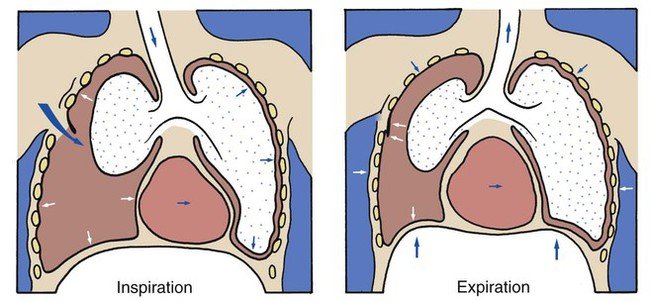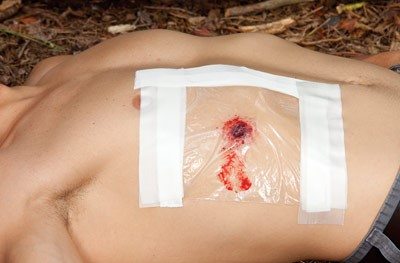Understanding of a Chest Seal
Material of a Chest Seal
Chest seals are typically crafted from high-grade medical materials designed to create an airtight seal over a penetrating chest wound. The choice of material affects the seal’s flexibility, adhesiveness, and durability in challenging conditions. Silicone-based adhesives are often preferred for their strong yet skin-friendly properties, allowing the seal to remain in place during patient transport and varied environmental conditions.

Adhesive Technology
Advancements in adhesive technology have dramatically increased the efficacy of chest seals. Modern adhesives offer a balance between strong tack and gentle removal, minimizing further damage to the skin. They are engineered to withstand exposure to blood, sweat, and water, maintaining their sealing ability throughout critical care scenarios.
To learn more about the multi-functionality of chest seal, please click the following link to read: What is a chest seal?
Purpose of a Chest Seal
A chest seal is a medical device used to treat open pneumothorax, a life-threatening condition commonly resulting from chest trauma. Its primary function is to prevent air from entering the pleural space while allowing the escape of air and fluids from within, thus preventing the development of a tension pneumothorax.
Understanding Pneumothorax
Pneumothorax occurs when air enters the pleural space, the slim gap between the lung and chest wall. This air can compress the lung and reduce its ability to expand. In a traumatic pneumothorax, this is often due to a puncture from a rib fracture or a penetrating injury like a gunshot or stab wound. A chest seal is applied to close the wound, preventing further air from entering the pleural space while allowing the lung to re-expand and heal. Understanding the mechanics and implications of pneumothorax is crucial for effective chest seal application, as mismanagement can lead to severe respiratory distress or death.

Understanding Pneumothorax: A fatal condition along with open chest wounds
Types of Chest Seals Available
The market offers various types of chest seals, including vented and non-vented versions. Vented chest seals are equipped with a one-way valve to allow air and fluids to escape while preventing their re-entry, which is crucial in preventing lung collapse. Non-vented seals, while effective in creating a barrier, are generally used temporarily until a vented seal or further medical treatment can be applied. Military medical studies have verified that less probalility of pneumothorax is shown within a simulatory environment when using vented chest seals over non-vented ones.
Preparing to Apply a Chest Seal
Initial Assessment and Safety Checks
The step before applying a chest seal is to conduct a thorough assessment of the patient’s condition. First responders must evaluate the nature and extent of the chest wound, checking for signs of a sucking chest wound or other complications like multiple punctures. Safety checks include ensuring the scene is secure and the patient is responsive, and assessing other potential injuries that may also require immediate attention.
Pre-application Considerations
Selecting the appropriate type of chest seal is vital based on the wound’s characteristics. For wounds that are bleeding profusely or have the potential for fluid buildup, a vented chest seal may be preferable. It’s also essential to ensure that the skin around the wound is as clean and dry as possible under the circumstances. This may involve wiping away blood and fluids, which can interfere with the adhesive’s ability to seal.
Before entering the application guidance, Fonitaniya™ has provide you with a top-notch example of chest seals with both vented and non-vented. Please see: Fonitaniya™ Chest Seal
Step-by-Step Application Guide
Cleaning and Preparing the Wound Area
Properly cleaning the wound area is fundamental to ensure that the chest seal adheres properly and provides an effective barrier. If time and situation permit, gently clean the skin surrounding the wound with sterile water or saline solution to remove any contaminants that could prevent the seal from sticking. Avoid using antiseptics that could degrade the adhesive.

Make sure the surrounding part of the wound is clean before applying chest seal.
Detailed Application Process
To apply the chest seal, start by peeling off the protective backing to expose the adhesive side. Position the seal over the wound, ensuring that the vent (if using a vented seal) is oriented correctly to allow air and fluids to escape. Press firmly around the edges of the seal to secure it to the skin, checking for any gaps or air bubbles that could compromise the seal’s integrity.
Aftercare and Monitoring
Post-Application Monitoring Protocols
After a chest seal is applied, it is adviced to continuously monitor patient’s respiratory status. Monitoring should include regular checks for signs of increasing respiratory distress, which could indicate a developing tension pneumothorax despite the seal. Observations should be documented, noting any changes in the wound’s condition, the seal’s adherence, and the patient’s overall stability.

It is important to look for respiratory distress or fluid buildup after applying chest seal.
Identifying and Managing Potential Complications
Potential complications such as skin irritation from the adhesive, improper seal causing air leaks, or insufficient venting in vented seals can lead to fluid buildup. If any of these issues occur, immediate action may be required, such as resealing or replacing the chest seal. Additionally, if the patient shows signs of increased discomfort or distress, further medical evaluation may be necessary to address underlying issues not immediately resolved by the seal.
Conclusion
The correct application of a chest seal can be life-saving in traumatic chest injuries. For healthcare providers, especially those in emergency and battlefield settings, the priority is to master the skill of applying and managing chest seals. Proper application reduces the risk of complications such as tension pneumothorax, which can be fatal if not managed promptly and effectively.

At Fonitaniya, we are committed to supporting healthcare professionals with high-quality chest seals that are both effective and easy to use. Our products are designed with the latest medical technologies and manufactured under strict quality controls to ensure reliability in all emergency scenarios.
FAQs
Is chest seal effective in stopping bleeding?
The chest seal is primarily designed for reducing the risk of pneumothorax. As it is applied, bleeding will slow down but will not completely stop. It is advice to use chest seal with other measurements to stop bleeding, and applying pressure could stop bleeding as much as possible.
Can you apply a chest seal to a sweaty or wet chest?
Absolutely, but for best adhesion, dry the area as much as possible before application.
What should you do if the chest seal fails to stick properly?
Ensure the area is dry and reapply pressure to the edges of the seal or use an additional adhesive.
How do you know when to replace a chest seal?
Replace the chest seal if it becomes noticeably loose or if the wound assessment indicates leakage.
Is a vented chest seal better than a non-vented one?
Vented chest seals are preferred as they allow air to escape from a chest wound, which can prevent tension pneumothorax.
Do you need to shave the chest before applying a chest seal?
Shaving the area can help with adhesion but is not mandatory unless excessive hair interferes with the seal.
How quickly must you apply a chest seal after a chest wound is sustained?
Apply a chest seal as soon as possible after recognizing a penetrating chest wound to prevent complications.




